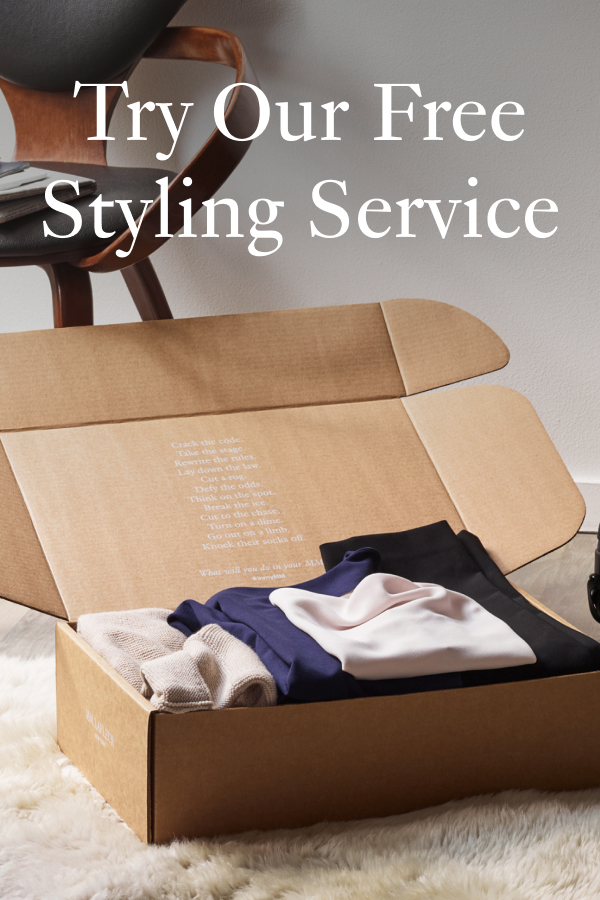The MM.LaFleur Design Philosophy: How We’re Revolutionizing Workwear
July 26, 2016
As our company grows, we’re constantly asked what exactly makes our MM.LaFleur design philosophy different from the sad sea of neutrals that dominate women’s workwear. (Besides our aversion to ill-fitting pantsuits, dull shift dresses, frumpy blazers, and hefty dry-cleaning bills, of course.) And our answer remains simple: Our clothes look really good. Not just “good for how comfortable they are” good, or “good for work” good, or “good for machine washable” good—our clothes make you look invincible and polished and daaaamn good.
And that’s always our number-one priority. Because we know that no matter how much you like our excellent customer service, delightful showrooms, and overall great vibes, it won’t matter unless you love to wear the clothes. And you will. Here’s why.
1. Function.
Plenty of clothes look nice in a dressing room, but start to feel tight and scratchy halfway through a 16-hour workday; we think you deserve—and need—better. From day one, MM.LaFleur’s designer, Miyako Nakamura, made it her mission to create gorgeous clothing that’s meant to be lived in. Formerly the head designer at Zac Posen, Miyako was well-versed in unique and flattering cuts, but she also knew that professional women required more than just a fantastic silhouette—they wanted stretchy sleeves for hailing cabs, comfortable skirts for sitting in, pockets for holding presentation notes, closures that wouldn’t poke, necklines and hem lengths appropriate for boardrooms, colors that weren’t too flashy, and a fantastic silhouette to boot. Because you can’t be expected to look fabulous in something that doesn’t feel fabulous.
2. Cut.
As Miyako always says, “Our clothes don’t really look good on hangers.” Which is too bad for hangers, but good for our customers, because our clothes are designed to be worn by humans—three-dimensional beings with hips, shoulders, butts, and boobs of varying sizes. The difference between what looks good in 3-D versus 2-D lies in subtle, inventive craftsmanship: Miyako gravitates towards bias-cut skirts and angled seams that drape smoothly over the body’s curves. She also knows where a sleeve should fall to make your arm look trim, how to complement your bust with carefully-placed darts, and the fine line between showing collarbone (elegant) and showing cleavage (no). Ultimately, we don’t care what the clothes look like by themselves—we care how they look on you.

Miyako in her office. (And yes, she’s 7 months pregnant, and designed her own maternity clothes.)
3. Fabric.
Obviously, a great cut doesn’t work unless great fabric is part of it. But looking beautiful isn’t enough. Truly great fabric also repels wrinkles, lets your skin breathe, doesn’t show that you’re sweating like crazy during a stressful meeting, won’t pill, feels nice, retains its shape, stretches after a long meal, lets you plop down on the floor with your kids / cat / pet turtle, won’t show your underwear, cleans easily when you squirt ketchup on it, and looks beautiful. Miyako and her team go to obsessive lengths to source fabric that checks all these boxes, making sure that it’s woven at esteemed mills with top-notch working conditions. We even try to make it machine-washable whenever possible (and yes, we test it ourselves, in the washing machines at our own apartments, exhaustively). If a fabric doesn’t meet our standards, we won’t use it—even if that means canceling a product at the eleventh hour.
4. Fit.
In developing a new item of clothing, some brands only do one fitting (a try-on session with a real woman, or a “fit model”). Most brands do two to four. Very high-end brands might do upwards of five. We do six to ten, or more if we have to—our record is 20. It costs a fortune and makes our budget managers cringe, but it means that our end results are more likely to fit our customers the way they should. What’s more, we listen carefully to your feedback, and we’re constantly tweaking our pieces based on what we hear. If people say the arms are too tight, then we loosen them a touch; if the hem is too long, we take it up next time. (Every updated rendition of a piece is reflected in its name—the Radner top became the Radner 2.0, and so forth.) We’re perfectionists, and proud of it.
5. That extra something special.
“We don’t have a single item that’s the same as something that already exists,” says Miyako. “Sometimes it’s very, very subtle, but there’s always at least one touch that makes each piece unique from what everyone else is wearing, or what’s already in your closet.” It might be a sophisticated gold button, an unusual pleat, a thoughtfully-placed dart, or a hidden elasticized waistband, but there’s always an element that adds oomph. Most importantly, those elements are meant to work in concert with your presence as a whole. Our goal isn’t a great-looking outfit; our goal is a great-looking woman. (That’s you.)
Photos by Frances F. Denny.









